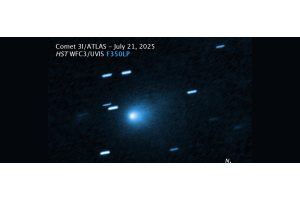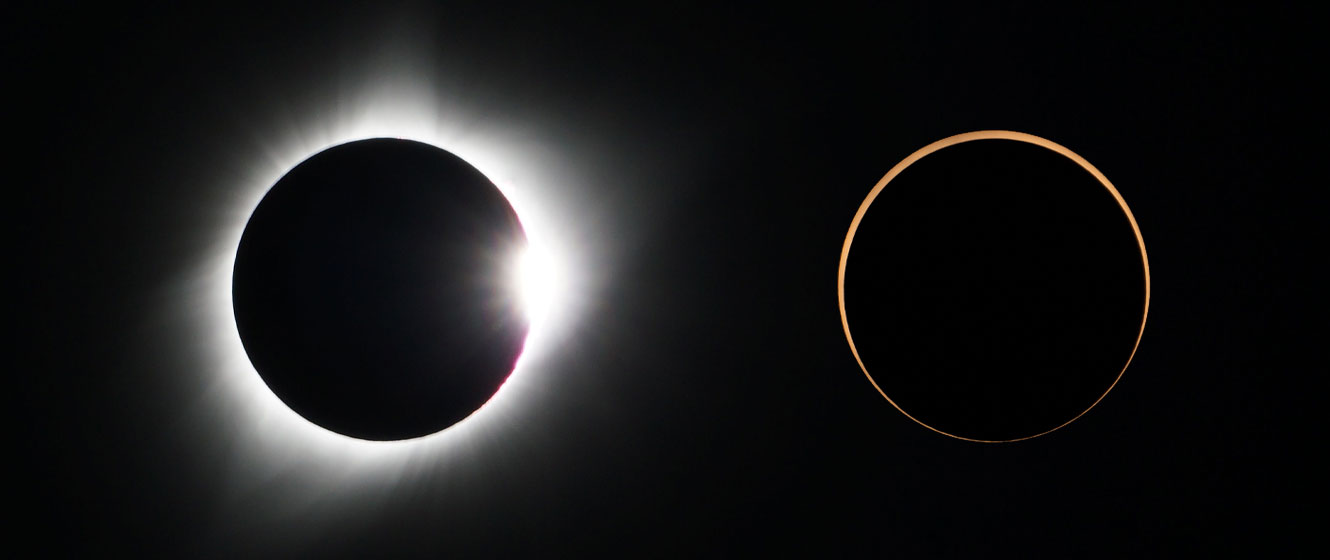
You’ve no doubt heard of both partial and total solar eclipses - but what’s a hybrid solar eclipse? You might think it’s a combination of the two, but when it comes to eclipses, it’s a little more complicated than that. So, how does a hybrid solar eclipse happen? And how is it different from a regular partial or total solar eclipse?
What Are Partial and Total Solar Eclipses?
Solar eclipses occur at New Moon when the Moon passes between the Earth and the Sun. If all three are in alignment, the Moon casts a narrow shadow onto the Earth’s surface, which then appears to move across the Earth as the Moon passes between the Earth and the Sun.
Anyone standing within the Moon’s shadow will see the Sun’s disc completely obscured by the Moon and will experience totality, which, on average, lasts about three minutes.
Unfortunately for us, eclipses don’t occur at every New Moon because the orbits of the Earth and the Moon are inclined at an angle. As a result, the Moon usually appears to pass either just below or just above the Sun in the sky. Sometimes, the Earth, Moon, and Sun are nearly aligned; when this happens, the Moon skims across part of the Sun’s disc, and we see a partial eclipse.
Anyone standing outside the path of the Moon’s shadow during a total solar eclipse will experience a partial solar eclipse instead. How much of the Sun’s disc is obscured will depend upon the observer’s location. Similarly, anyone standing within the path of the Moon’s shadow will experience a partial eclipse before and after totality.
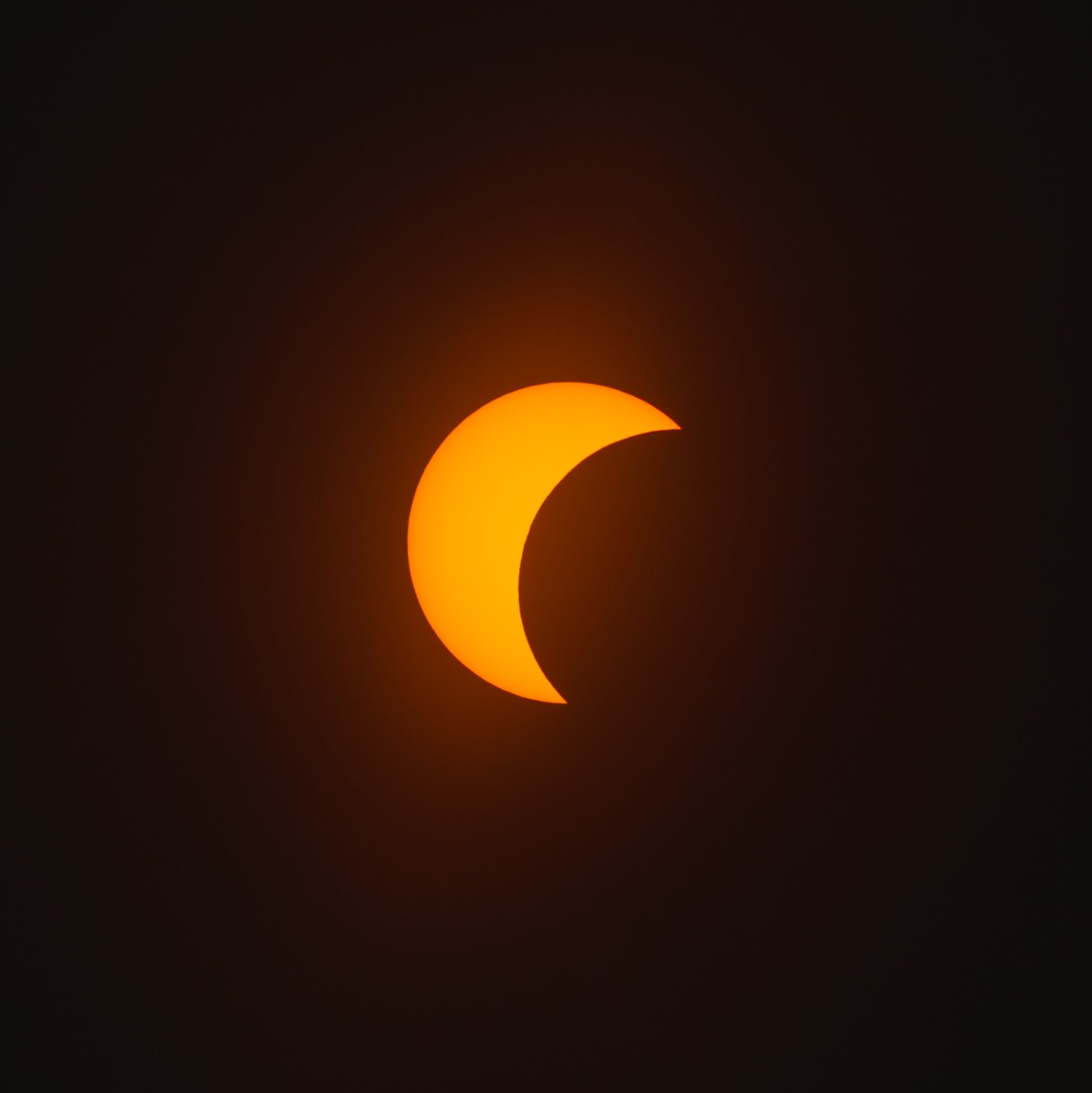
Partial and total eclipses are the two types of solar eclipse that many people are familiar with, but there are also two other types: annular and hybrid.
What is An Annular Eclipse?
Naturally, the further away an object is, the smaller it appears, and while the Sun is 400 times larger than the Moon, it’s also 400 times further away, making it appear 400 times smaller. The end result is that the Sun and the Moon appear roughly the same size in the sky.
A total eclipse of the Sun is only possible because of this celestial coincidence; however, just to complicate matters, the Moon isn’t always the exact same distance from the Earth. While its orbit is slightly tilted, it’s also slightly elliptical, and there are times when the Moon is a little closer or farther away than usual.
When the Moon is closest, it appears slightly larger in the sky, and when it is furthest, it appears slightly smaller. As you might expect, there are times when a solar eclipse occurs when the Moon is further away than usual. In this scenario, the Moon appears slightly smaller and isn’t quite able to cover the entirety of the Sun’s disc.
As a result, at maximum eclipse, observers will see a ring of light instead of the glowing white halo you would otherwise see during a total solar eclipse. This ring of light (nicknamed “the ring of fire”) is the light from the remaining portion of the Sun shining from behind the Moon.
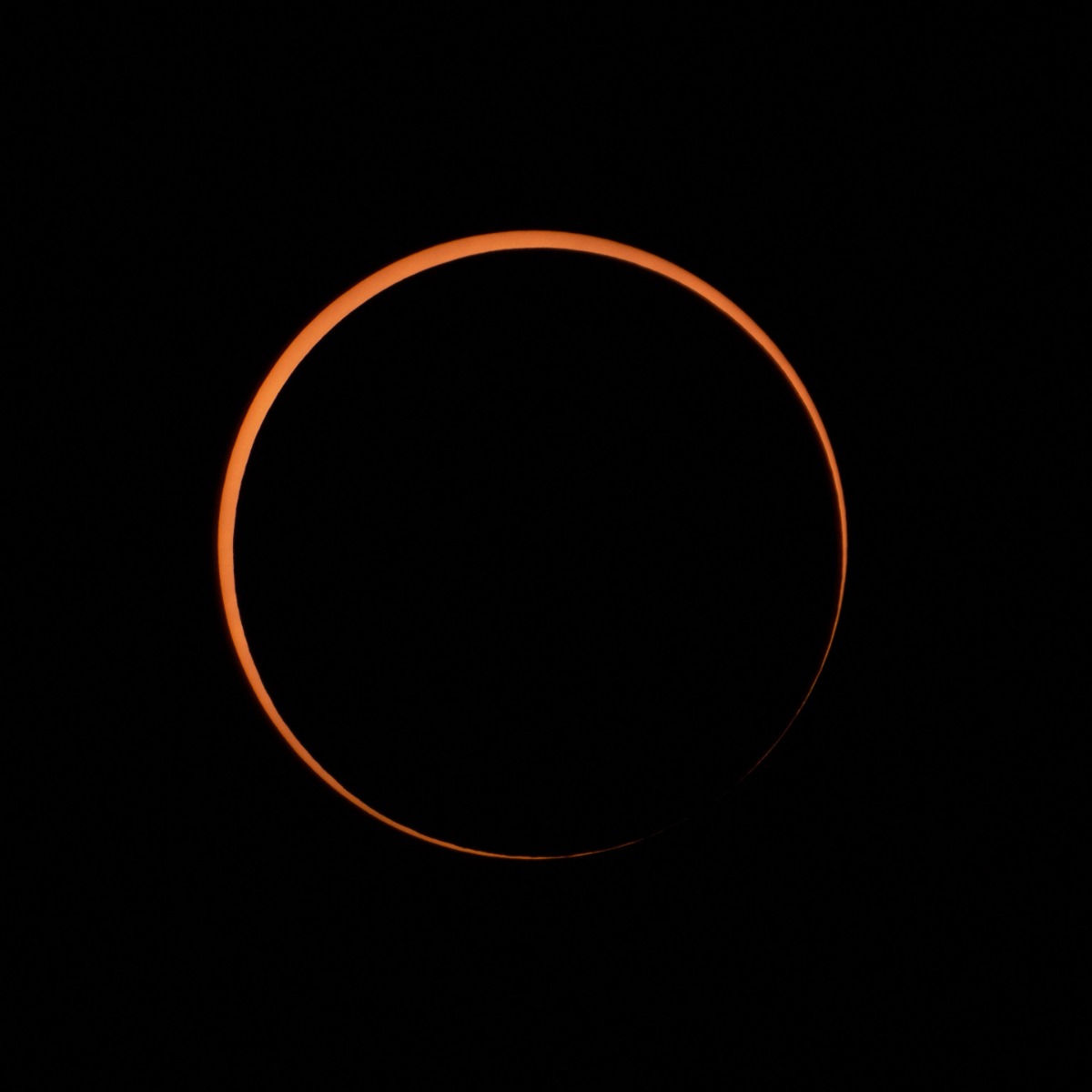
Partial, total, and annular eclipses are the three primary types of eclipse, but there is one more, and it’s the rarest of them all.
What is A Hybrid Solar Eclipse?
As if things weren’t complicated enough, on rare occasions, the Moon is at just the right distance to be on the cusp between a total and an annular eclipse. Depending on your location, you’ll experience one or the other.
How can this happen? It’s all due to the curvature of the Earth. As mentioned earlier, during a total solar eclipse, the Moon casts a shadow on the Earth, which then moves across the Earth as the Moon passes between the Earth and the Sun.
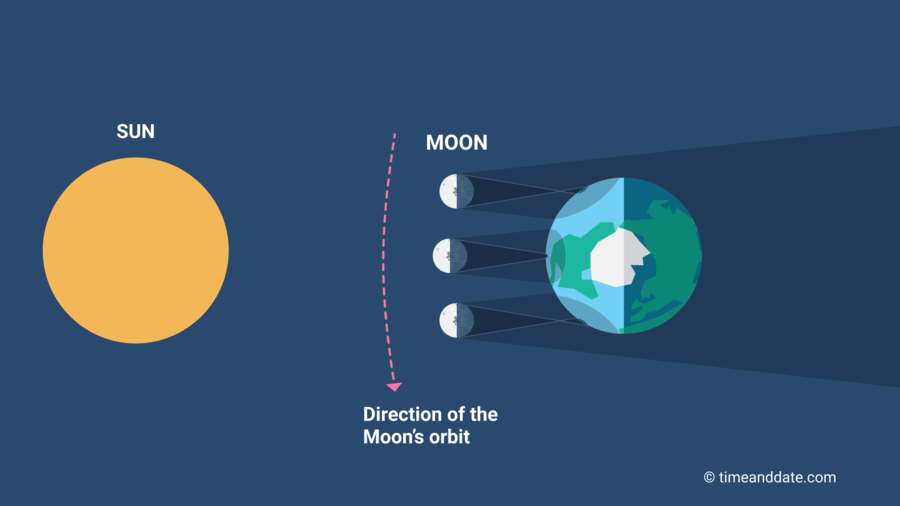 Diagram explaining a hybrid solar eclipse. Image Credit: timeanddate.com
Click to Enlarge Image
Diagram explaining a hybrid solar eclipse. Image Credit: timeanddate.com
Click to Enlarge Image
When the Moon’s shadow first hits the Earth, the angle between the Moon and the surface of the Earth is a little steeper, as the curve of the Earth places the observer a little further away from the Moon. As a result, observers at that location will see the Moon a little smaller and will experience an annular solar eclipse. As the Earth rotates and the Moon moves through its orbit, the distance and the angle between the Moon and the surface of the Earth are reduced. From the midpoint of the path of the Moon’s shadow, the Moon is large enough to cover the entire disc of the Sun, and observers there will experience a total solar eclipse.
Over the next few hours, as the Moon continues to move through its orbit, the angle and the distance between the Moon and the surface of the Earth increases. This has the effect of making the Moon appear smaller so that observers at the end of the path of the Moon’s shadow will see an annular eclipse.
Total solar eclipses occur once every 18 months, but a hybrid solar eclipse is much rarer - on average, just once a decade, with the last occurring on April 20th, 2023.
Is it possible to see both an annular and then a total solar eclipse during the same hybrid event? Maybe - but it would take some planning. For starters, you’d need to find a location along the path of the shadow where the Moon appears just slightly smaller than the Sun. From there, you’ll see an annular eclipse. You’d then have to find a location where the Moon is just slightly larger than the Sun and get there quickly. You’d then be able to witness a total solar eclipse.
There’s bad news, though, as none of the upcoming hybrid eclipses will give you much hope for success. The next occurs on November 14th, 2031, but the path stretches across the Pacific and barely makes landfall towards the end.
You then have a long 18-year wait, with the next two occurring just 6 months apart, in November 2049 and May 2050. The eclipse of 2049 can be seen from Asia, but only after mid-eclipse. The eclipse of 2050 is perhaps the worst of all, with the entire path of the Moon’s shadow being confined to the far southern Pacific.
Unfortunately, while a hybrid eclipse could theoretically give you two for the price of one, it seems no one will have that opportunity for quite some time to come!










